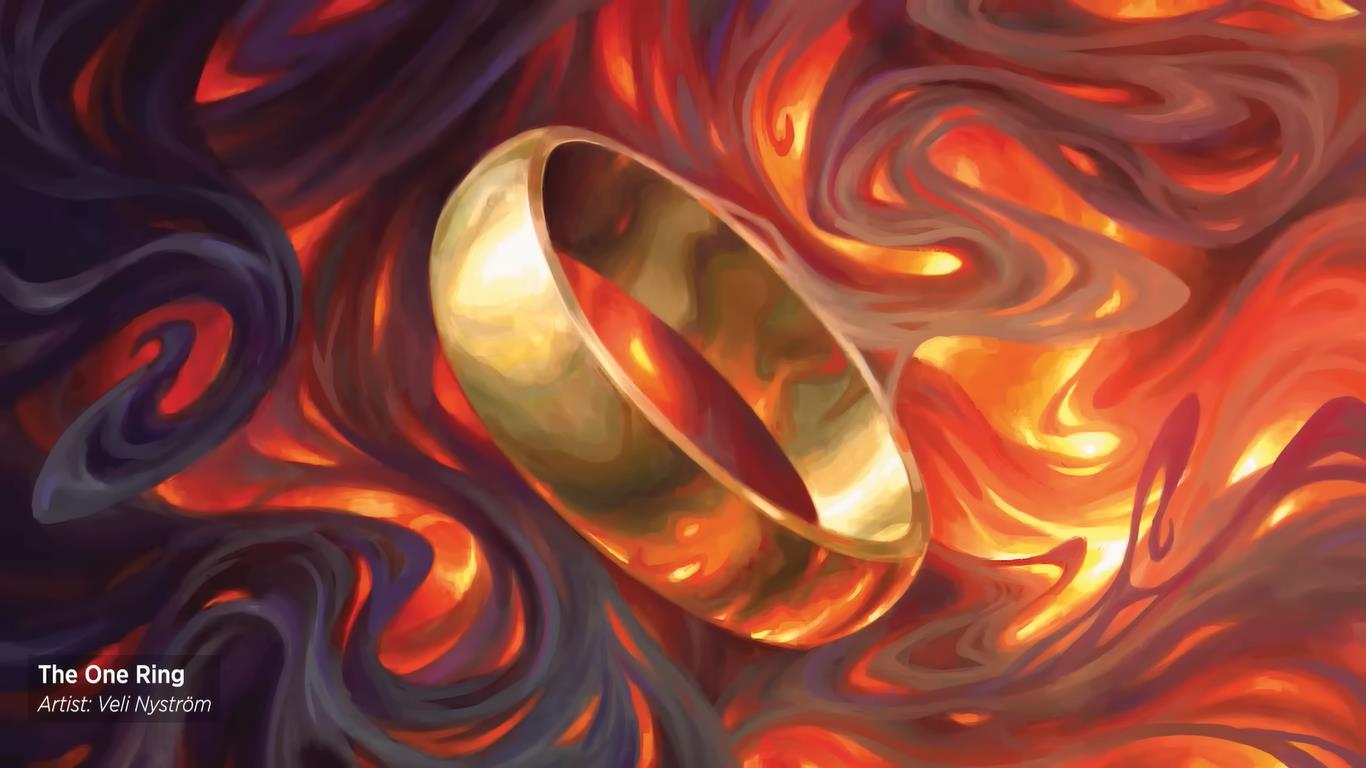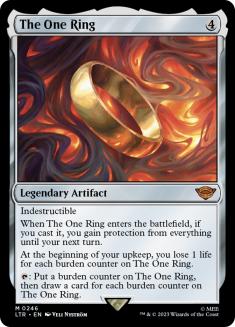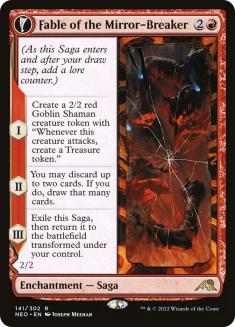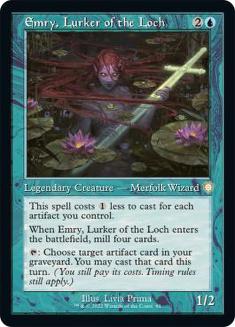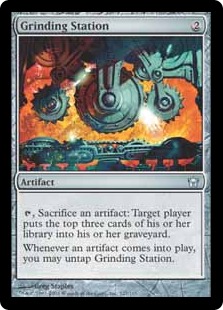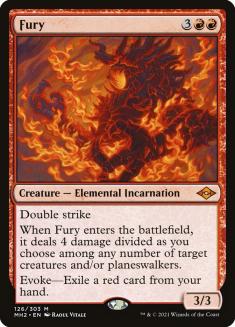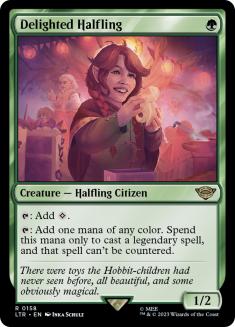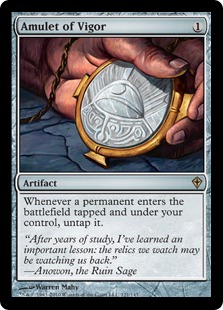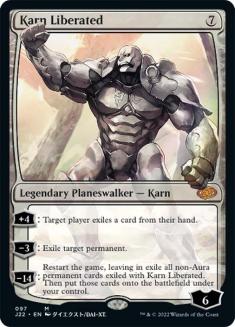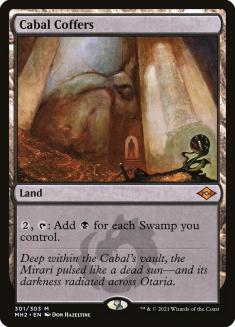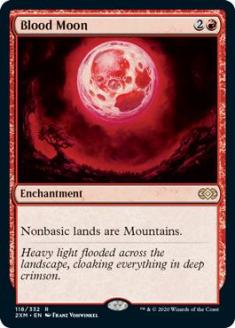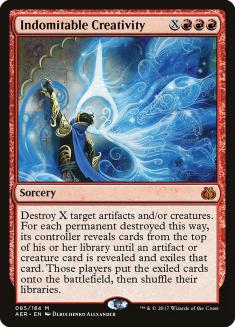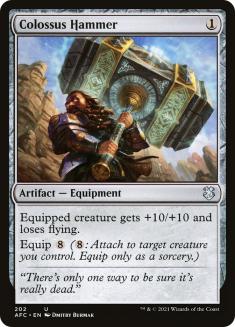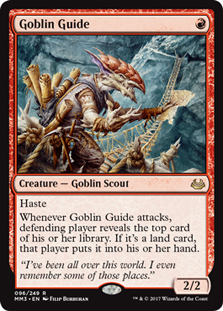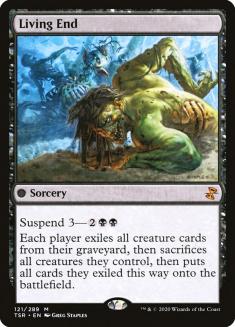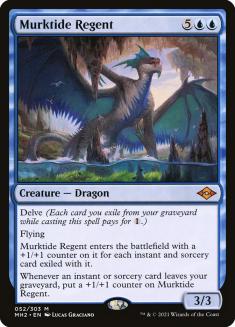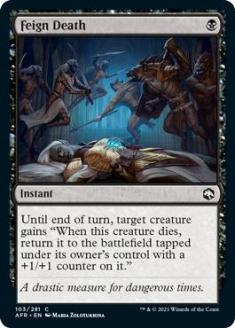The One Ring burst into competitive Magic this week with the most dramatic entrance in years. Just days after the release of Lord of the Rings: Tales of Middle-earth, its flagship card is shaking Modern to its foundations ahead of a Pro Tour that many feared would just be more of the same. I can hold my hands up and confess that I massively underrated The One Ring – my only consolation is that everyone else did too!
The Blindness of Crowds
This blindside is even more shocking because it was hiding in plain sight for months. The One Ring was our first glimpse of the set way back in March, prompting some interest in what looked like a weird but harmless card. For my fellow combo enthusiasts, this was a promising build-around, but one that would probably be ignored by the mainstream. For many others, it was a disappointment – why not render the most important piece of the entire story in a stronger card?!
It took one game with The One Ring to realize its power. Any of us could have tried the card in a casual setting and been months ahead of the curve. Now that word spreads over Twitch and Twitter in an instant, no secret can last for long – but why was this a secret at all?
This immediately reminded me of a personal and collective failure to appreciate Fable of the Mirror-Breaker. Now that Fable is banned in Standard and everywhere in Pioneer and Modern, it’s easy to forget that it totally flew under the radar on its release. At the Set Championship for Kamigawa: Neon Dynasty – the highest level of online competition in that era – very few players or teams registered Fable, and some of those exceptions only did so because they were fortunate enough to run into other players on the Arena ladder who did take the card seriously!
The rest of us learned our lesson the first time we faced off against Fable in that tournament. If we had just played with the card for a game or two at any point, we might have been on the right track.
Our intuition failed us. In a world where every card is wordy and does many things – often with no clear link between them – it’s much harder to assess a card at a glance. Even if your evaluation of one aspect of a card is correct, misjudging the others leaves you with a poor overall picture of a card that may then be much more or less than the sum of its parts. Heuristics honed over the years look less reliable than ever, and that’s how it should be for Magic to remain engaging and challenging for those of us who have played for most of our lives. It’s fun and useful to talk about cards in theory, but there’s no substitute for actually playing games.
Week 1
The One Ring is just getting started – the card is currently so hard to buy or rent on Magic Online (MTGO) that many of its disciples had trouble finding copies for this weekend. Once these artificial limits on its supply melt away and we have even more varied examples of its success, you can expect to see even more of it.
These early returns are clues to where the card can fit and where it can flourish.
Corey Baumeister brought his beloved Grinding Breach back from the dead with the power of The One Ring. This deck won a devoted following with its flexibility – a combo finish as early as Turn 3 featuring perhaps the most powerful card still legal in Modern, surrounded by cheap interaction and solid threats as well as the perfect backup plan in Urza’s Saga.
The problem in practice was that none of these plans were that resilient, and switching to another one in the moment often felt like a lost cause. Grinding Breach players liked to joke that it was hard to sideboard against the deck because every card was useful – graveyard hate as well as artifact or enchantment removal blocked the combo, while creature removal could snipe Ragavan or Emry. Ledger Shredder had to try to finish the job on its own while a dead Grinding Station or Mox Amber looked on helplessly from the sidelines.
The One Ring flips that dynamic. An uncontested Ring buries the opponent in card advantage and punishes someone for getting stuck with the wrong type of interaction (or for trying to trade cards in an interactive game at all). You don’t care if you can’t stick a creature or your graveyard is off-limits – the game is about something totally different now.
Grinding Breach makes use of this flurry of cards better than most decks. Your curve is so low that it’s easy to cast everything you draw. Emry finally has a game-warping artifact to bring back, making it a must-kill threat – you can even create a lock of sorts by looping two different Rings with Emry, keeping that protection turn after turn, if the opponent can’t remove Emry. Grinding Station finds a use outside the combo by firing a Ring that would deal too much damage. In return, Ring makes it easier to find that combo and ensures that the Breach it inevitably finds will win the game on the spot.
How about… Yawgmoth?! This isn’t an obvious home for Ring – and may be a case of Xerk showing that he can put anything in his Yawgmoth list and still win yet another Modern Challenge – but you can see the appeal. If you can’t keep your namesake creature or its victims alive against removal, why not use your mana creatures to ramp out a Ring and laugh at that?
Creatures (18)
- 4 Omnath, Locus of Creation
- 4 Solitude
- 2 Fury
- 2 Elesh Norn, Mother of Machines
- 2 Nissa, Resurgent Animist
- 4 Delighted Halfling
Planeswalkers (8)
Lands (23)
Spells (12)

The much-maligned Four-Color Control is back in a big way. Without Yorion as a companion embellishing that name, the deck didn’t have a reliable way to go over the top in the mid-game and could often fizzle out despite making favourable trades or amassing resources with Omnath, Locus of Creation. The One Ring solves that problem, only asking that you pair it with enough defensive tools to stay alive that long.
Prismatic Ending and Leyline Binding certainly help there but nothing fits the bill quite like the Evoke Elementals. It’s easier to justify throwing away a card to exile a creature with Solitude early knowing you will get many more cards back later. When you refill your hand with Ring, all you want are ways to convert those cards into an immediate impact on the game, and pitch spells are perfect there. Modern didn’t need more reasons to play Solitude and Fury, but it just found one.
On a big Ring turn, Omnath effectively pays for itself while giving you the life to survive the next Ring trigger. With Omnath and Ring as high-impact plays sharing a spot on the curve, you can sculpt the game around resolving and protecting either.
Perhaps the next most important card from the set, Delighted Halfling helps all this happen ahead of schedule. A few previous Four-Color Control lists dabbled in mana creatures or the narrower but resilient Utopia Sprawl, but Halfling has already cemented itself as a centerpiece of this build. Halfling survives an opposing Wrenn and Six while casting your own and offers a form of fixing under Blood Moon. These lists are full of three-drops and four-drops that generate an advantage turn by turn, from Fable of the Mirror-Breaker and the new Nissa, Resurgent Animist to Omnath and The One Ring, and these are all on the table a turn sooner with Halfling.
This is especially important for Teferi, Time Raveler, your main threat against Living End, which is enjoying an explosion in popularity thanks to the landcyclers like Oliphaunt and Generous Ent. Teferi was too slow on the draw against a Turn 3 Living End, and even on the play it was highly susceptible to Force of Negation. Halfling allowing a fast, protected Teferi is a godsend there.
Big Mana, Big Dreams
The big mana decks of Modern are all salivating over The One Ring too. As an Amulet Titan fan, I’ve struggled for years to fill out the last few flex slots in the deck and find a good threat for games where you don’t have Primeval Titan. The deck can cast Ring as early as Turn 2, as shown in my Tweet, but you can cast it on Turn 3 with just one ramp spell, giving you a strong payoff without needing to jump through hoops to get to six mana for Primeval Titan. Ring turns a low-resource game into a high-resource game, finding those missing pieces and setting up some incredible turns. It’s tough to make progress when you know your Titan is dead on arrival to Solitude or Unholy Heat. Ring ignores those and eventually gives you enough threats to power through them.
In Mono-Green Tron, it’s more of an insurance policy. If you have full Tron and a good payoff, you’ll just cast that instead – but that’s no guarantee. Games with Tron are often polarized between doing something unbeatable and doing nothing. Ring is an ideal bridge for the games in the middle.
The One Ring can even ward off the biggest nightmare for anyone leaning on their lands. Blood Moon is still Amulet Titan’s nemesis, but it now looks much more beatable in a normal game. If you keep an otherwise mediocre draw on the strength of Blood Moon and your opponent responds to your Moon with Ring, how confident do you feel? That Ring may draw them six or more extra cards and find a way to shoot the Moon, unlocking that stocked hand.
Why Not Ring?
It seems like The One Ring is everywhere, but it naturally makes a bigger impression when it does show up than when a deck that doesn’t or couldn’t play it just keeps doing its thing.
Sometimes you sign up for a deckbuilding constraint that makes that choice for you. It’s fitting that a new challenge to Indomitable Creativity’s throne comes from a card that it couldn’t play even if it wanted to.
Linear decks that aim to put the game away before either player could cast a Ring need to stay focused on that plan. If they do want a source of card advantage for longer games, they will turn to something cheaper or more relevant to their theme first.
In contrast to Grinding Breach, Izzet Murktide allows itself to play reactive cards by keeping its curve low with cheap proactive ones. If your expected mid-game is casting a two-drop and holding up Counterspell, a four-mana sorcery feels awkward.
Similarly, Rakdos Evoke tries to create a game where both players have few resources and is designed to press its advantage quickly before the game can grow again. A four-drop that creates a gradual advantage and doesn’t pitch to either Elemental works against that goal. It works well against it from the other side too – Ring is a big problem, and one reason for their recent adoption of Orcish Bowmasters.
Living in Ringworld
The One Ring is a phenomenal card poised to shake up Modern more than anything since the Modern Horizons sets and the dark days of Oko, Thief of Crowns and Uro, Titan of Nature’s Wrath. It’s also a fascinating case study in card evaluation that should be humbling and illuminating. You can understand Modern and its major players as well as broader Magic principles through the lens of which decks want Ring and which decks use it well, what Ring does to a game, and how to fight or ignore it.
That knowledge will be pushed to its limits when Modern returns to the big stage at the Pro Tour in a few short weeks. I’ll see you there!

